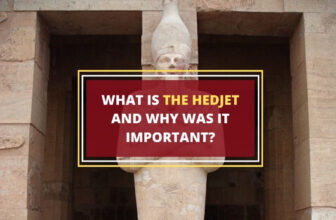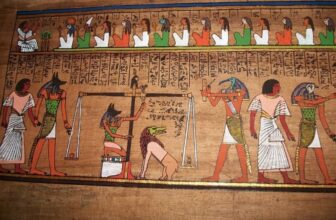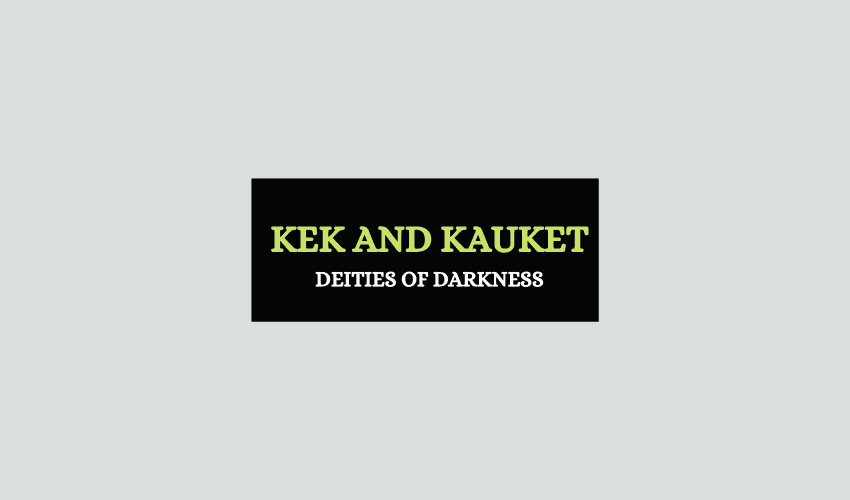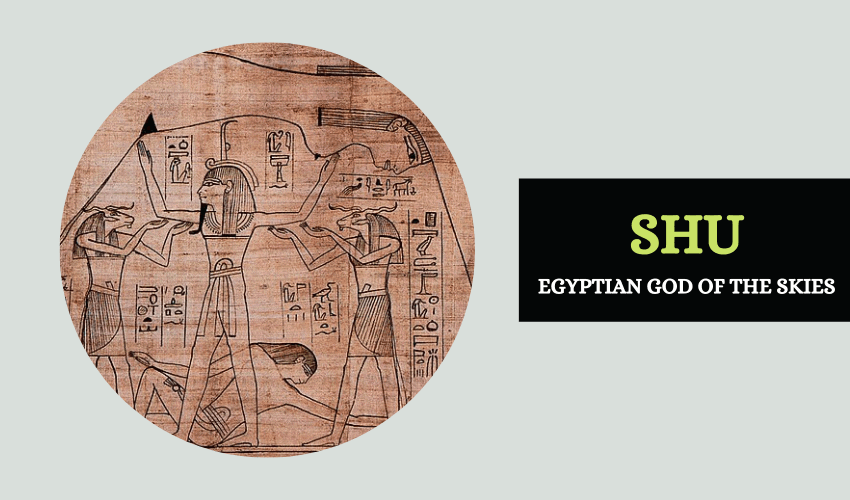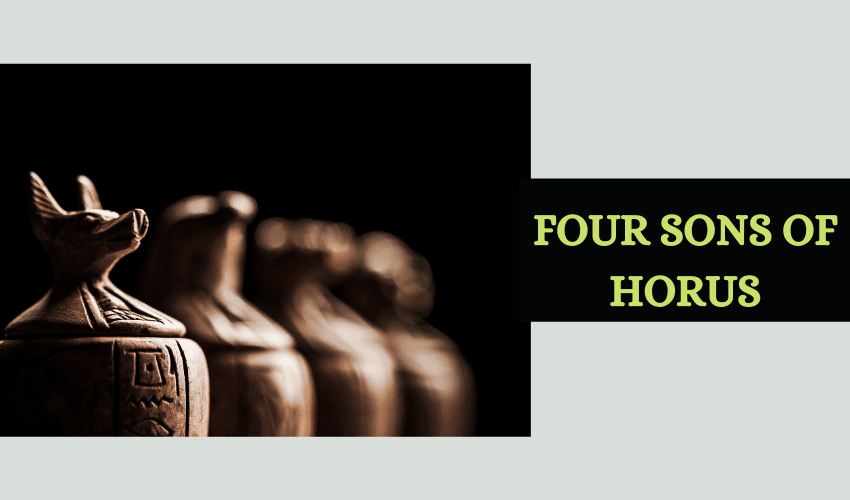
Table of Contents
Both the afterlife and the mortuary rituals were essential aspects of the ancient Egyptian culture, and there were many deities and symbols associated with death. The Four Sons of Horus were four such deities, who played significant roles in the process of mummification.
Who Were the Four Sons of Horus?
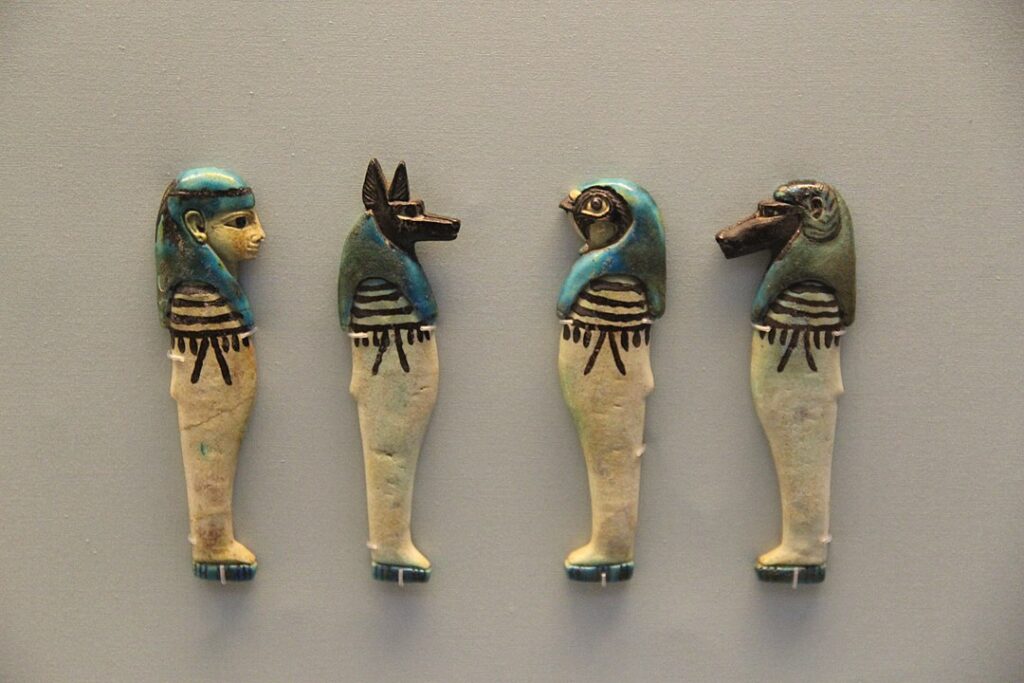
According to the Pyramid Texts, Horus the Elder fathered four children: Duamutef, Hapy, Imsety, and Qehbesenuef. Some myths propose that the goddess Isis was their mother, but in some others, the goddess of fertility Serket is said to have borne them.
Isis was the wife of Osiris, but some sources state that she was also the consort of Horus the Elder. Due to this duality, Osiris appears in some myths as the father of these gods. Still other sources state that the four sons were born from a lily or a lotus flower.
Although they appear in the Pyramid Texts of the Old Kingdom, as not only the sons of Horus but also his ‘souls’, the four sons became prominent figures from the Middle Kingdom onwards. The sons of Horus had a central role in the mummification process, since they were the protectors of the viscera (i.e. the vital organs). They had the most important task of helping the king find his way in the afterlife.
The Importance of the Organs in Ancient Egypt
Throughout the history of ancient Egypt, the Egyptians were constantly developing their mummification process and embalming techniques. They believed that the intestines, liver, lungs, and the stomach were necessary organs for the afterlife, as they enabled the deceased to continue their existence in the afterlife as a complete person.
During the burial rituals, these four organs were stored in separate jars. Since the Egyptians considered the heart to be the seat of the soul, they left it inside the body. The brain was plucked out of the body and destroyed, as it was deemed unimportant, and the four mentioned organs were embalmed and preserved. For added measure, the Sons of Horus and accompanying goddesses were designated as the protectors of the organs.
The Role of the Four Sons of Horus
Each one of the Sons of Horus was in charge of the protection of an organ. In turn, each son was accompanied and protected by designated goddesses. The Egyptians sculpted the image of the Sons of Horus onto the lids of the Canopic Jars, which were the containers they used to store the organs. In later times, the Egyptians also associated the Sons of Horus with the four cardinal points.
All four sons of Horus appear in spell 151 of the Book of Death. In spell 148, they’re said to be the pillars of Shu, the god of air, and assist him in holding the sky up thereby separating Geb (earth) and Nut (sky).
1- Hapy
Hapy, also known as Hapi, was the baboon-headed god who protected the lungs. He represented the North and had the protection of the goddess Nephthys. His Canopic Jar had the form of a mummified body with a baboon head for a lid. Hapy also had the role of protecting the throne of Osiris in the Underworld.
2- Duamutef
Duamutef was the jackal-headed god who protected the stomach. He represented the East and had the protection of the goddess Neith. His Canopic Jar had the form of a mummified body with a jackal head for lid. His name stands for he who protects his mother, and in most myths, his mother was Isis. In the Book of Death, Duamutef comes to the rescue of Osiris, whom these writings call his father.
3- Imsety
Imsety, also known as Imset, was the human-headed god who protected the liver. He represented the South and had the protection of Isis. His name stands for the kind one, and he had associations with heartbreaks and death for an excess of emotions. Unlike the other Sons of Horus, Imsety did not have an animal representation. His Canopic Jar had the form of a mummified body with a human head for lid.
4- Qebehsenuef
Qebehsenuef was the falcon-headed Son of Horus who protected the intestines. He represented the West and had the protection of Serket. His Canopic Jar had the form of a mummified body with a falcon head for lid. Apart from the protection of the intestines, Quebehsenuef was also in charge of refreshing the body of the deceased with cool water, a process known as libation.
The Development of the Canopic Jars
By the time of the New Kingdom, the embalming techniques had evolved, and the Canopic Jars no longer held the organs inside them. instead, the Egyptians kept the organs inside the mummified bodies, as they had always done with the heart.
However, the importance of the four sons of Horus did not diminish. Instead, their representations continued to be an essential part of the burial rituals. Although the Canopic Jars no longer held the organs and had small or no cavities, they still featured the sculpted head of the Sons of Horus on their lid. These were called the Dummy Jars, which were used more as symbolic objects to signify the importance and protection of the gods, rather than as practical objects.
Symbolism of the Four Sons of Horus
The symbols and images of the Four Sons of Horus had unparalleled importance in the mummification process. Due to their belief in the afterlife, this process was a central part of Egyptian culture. The fact of having a god for each of these organs gave a sense of long-lasting protection, which was enhanced by the presence of the mighty goddesses watching over them.
It’s also important to note that in Ancient Egypt, the number four was a symbol of completeness, stability, justice and order. This number appears often in Egyptian iconography. Examples where the number four shows itself in ancient Egyptian iconography can be seen in the four pillars of Shu, the four sides of a pyramid, and in this case, the four sons of Horus.
In Brief
The Four Sons of Horus were primordial deities for the deceased since they helped them in their journey into the afterlife. Although they appeared in early stages of Egyptian mythology, they took on more central roles from the Middle Kingdom onwards. Their associations with the cardinal points, their connections with other deities, and their role in the mummification process made the Four Sons of Horus central figures of ancient Egypt.




